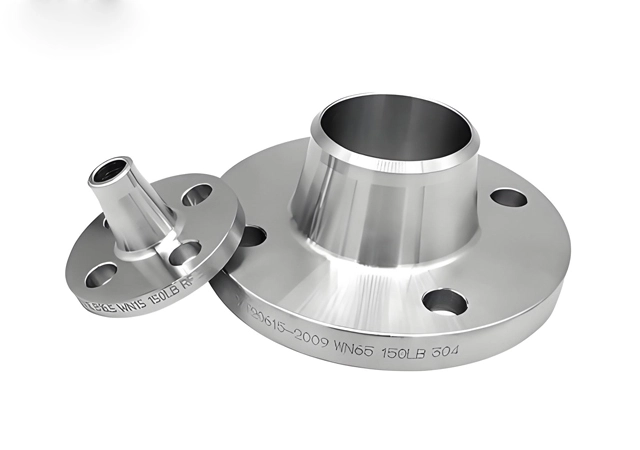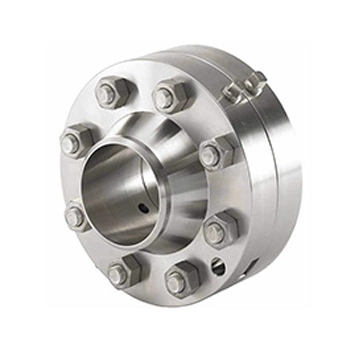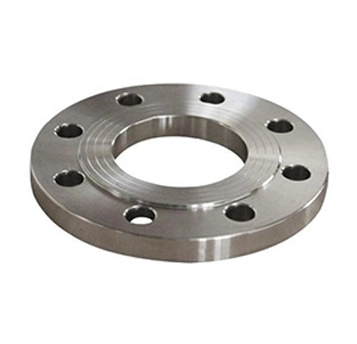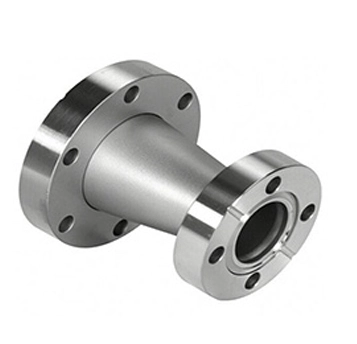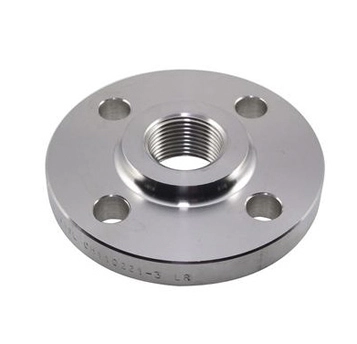What is Weld Neck Flange
A weld neck flange is a type of flange widely used in piping systems. It is characterized by a long, tapered neck that is welded to the pipe. The flange has a raised face or other specified face types and is drilled with bolt holes for connection to other flanged components.
The main function of a weld neck flange is to provide a reliable and leak-proof connection between pipes or between a pipe and other equipment. The tapered neck design helps to distribute stresses more evenly, reducing the risk of stress concentration and potential failure.
weld neck flange is capable of withstanding high pressures and temperatures, making it suitable for use in various industrial applications such as in oil and gas, chemical, and power plants. Additionally, it allows for easy installation and maintenance by enabling quick disassembly and reassembly of the piping system.
Types of Weld Neck Flange
1. Long Weld Neck Flange (LWN Flange)
Often complies with ASME B16.5 or API 605 standards.
2. Heavy Barrel Weld Neck Flange
Designed with a thicker and heavier barrel (hub) for extra strength.
3. Ring-Type Joint (RTJ) Weld Neck Flange
Features a groove on the flange face to accommodate a metal ring gasket.
4. Raised Face (RF) Weld Neck Flange
The most common type, with a raised face around the bore to concentrate pressure on the gasket.
5. Flat Face (FF) Weld Neck Flange
Has a flat face across the entire flange surface.
6. Reducing Weld Neck Flange
Used to connect pipes of different diameters.
7. High Hub Weld Neck Flange
Designed with a taller hub for additional reinforcement.
Advantages of Weld Neck Flange
Excellent strength and durability.
Reduced risk of leakage due to the welded connection.
Suitable for extreme conditions.
Easy to inspect and maintain.
Standards of Weld Neck Flange
ASME Standards
ASME B16.5: Covers dimensions, pressure - temperature ratings, materials, and other requirements for pipe flanges and flanged fittings, applicable to a wide range of pipe sizes and pressure classes.
ASME B16.47: Deals with large diameter steel flanges, specifying dimensions and other technical requirements for flanges with diameters larger than those in ASME B16.5.
ASTM Standards
ASTM A105/A105N: Applies to carbon steel forging used in pressure vessel components and pipe flanges, defining the material requirements and mechanical properties of carbon steel weld neck flanges.
ASTM A182: Applies to alloy and stainless steel forgings for pressure - containing parts, covering materials like F11, F22 alloy steel and F304/F304L, F316/F316L stainless steel for weld neck flanges.
European Standards
EN 1092 - 1: Specifies the design, dimensions, and technical requirements of steel flanges in the European system, including weld neck flanges.
DIN 2630 - 2638 and DIN 2627 - 2629: The DIN standards in Germany detail the dimensions, pressure ratings, and other aspects of weld neck flanges, with different parts covering different pressure levels and usage scenarios.
British Standards: BS 3293 gives the specifications for weld neck flanges, including requirements for dimensions, materials, and testing.
Material Grade of Weld Neck Flange
Carbon Steel Weld Neck Flanges
ASTM A105: For high-temperature service, commonly used in pipelines and fittings.
ASTM A350 LF2: Low-temperature carbon steel flange, suitable for sub-zero environments.
ASTM A694: High-yield carbon steel flanges for high-pressure pipeline applications (e.g., F42, F52, F60, F65, F70).
Stainless Steel Weld Neck Flanges
ASTM A182 F304/304L: General-purpose stainless steel with excellent corrosion resistance.
ASTM A182 F316/316L: Superior corrosion resistance, especially against chlorides and acids.
ASTM A182 F321: Contains titanium for improved resistance to intergranular corrosion.
ASTM A182 F347: Stabilized with niobium for high-temperature applications.
Alloy Steel Weld Neck Flanges
ASTM A182 F11: Chromium-molybdenum alloy steel for high-temperature service.
ASTM A182 F22: Higher chromium content for improved oxidation and corrosion resistance.
ASTM A182 F5: Suitable for high-temperature and high-pressure applications.
ASTM A182 F9: Contains higher chromium and molybdenum for enhanced strength and corrosion resistance.
Applications of Weld Neck Flange
Oil and Gas Industry: Used in onshore and offshore pipelines, as well as in refinery process pipelines, able to withstand high pressure and corrosion.
Chemical Industry: Applied in pipelines for transporting chemicals and equipment connections, ensuring sealing to prevent leakage of hazardous chemicals.
Power Generation: In thermal power plants, for steam pipelines; in nuclear power plants, for cooling systems, guaranteeing power transmission and equipment operation.
Water and Wastewater Treatment: In water supply systems, connects large - diameter pipes; in wastewater plants, used in pipelines for transportation and treatment processes.
Marine Industry: Connects various pipelines in the ship's engine room, needs to be corrosion - resistant, and is used in pipelines for multiple ship - borne functions.

 EN
EN
